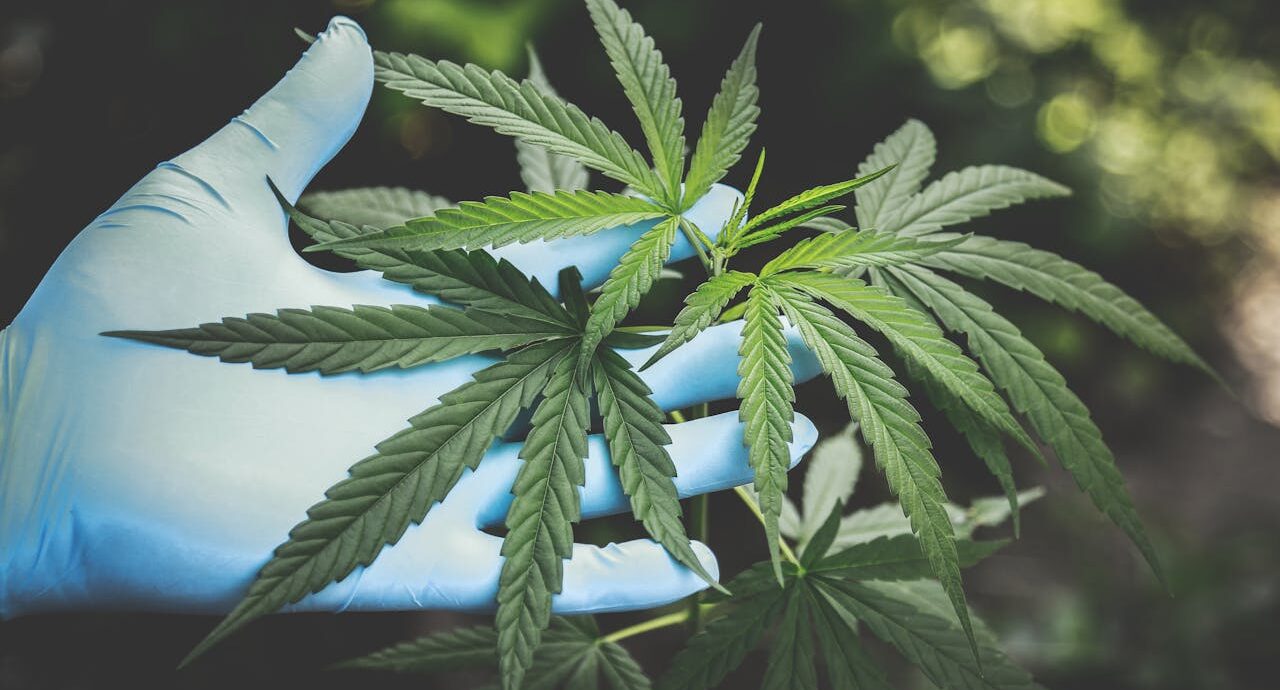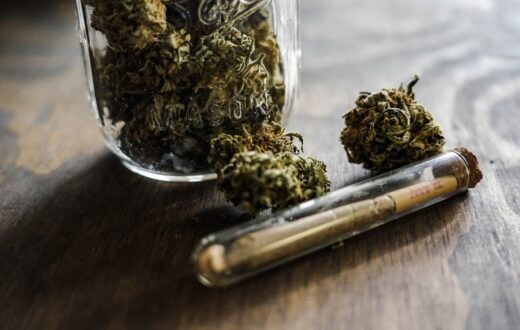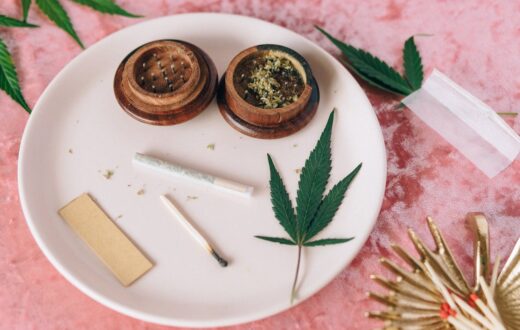Introduction to Caramel Cream Strain
The Caramel Cream strain is a notable hybrid cannabis strain admired for its unique compound of genetics, flavor profile, and potent effects. This strain results from crossing the popular strains, Maple Leaf Indica and the renowned Blue Dream. The result is a well-balanced strain that offers both relaxation and euphoria, making it particularly appealing for various users. With its aromatic notes of sweet caramel and hints of vanilla, this strain leaves a delightful impression on the palate, which is often cited as one of the reasons enthusiasts seek to learn how to grow Caramel Cream strain.
One of the most attractive features of Caramel Cream is its balanced effects. Users typically report feeling a gentle yet uplifting euphoria, coupled with physical relaxation. This makes it an excellent choice for those seeking relief from stress or chronic pain while still remaining functional and engaged. Moreover, many growers are drawn to Caramel Cream not only for its sensory delights but also for its capacity to deliver commendable yields and high-quality harvests. Novice and seasoned growers alike appreciate its resilience and adaptability throughout various growing conditions.
As a cultivar, Caramel Cream presents a host of benefits that are incredibly attractive for cultivation. Its moderate growth requirements and ability to thrive both indoors and outdoors make it accessible for growers in different environments. Furthermore, its flowering time of around 8-9 weeks provides a timely return on investment for those eager to learn how to grow Caramel Cream strain effectively. By understanding the unique characteristics and benefits of this strain, prospective growers can set themselves up for success, ensuring that they enjoy both the cultivation process and the eventual rewards.
Ideal Growing Conditions
To successfully cultivate the Caramel Cream strain, it is crucial to establish optimal growing conditions that foster healthy plant development. Understanding the specific requirements for soil, temperature, humidity, and light will significantly improve your chances of a fruitful harvest.
Firstly, the soil type is fundamental when considering how to grow the Caramel Cream strain. A well-aerated, nutrient-rich soil mix is recommended, ideally consisting of organic components such as peat moss, vermiculite, and perlite. This combination not only provides the necessary nutrients but also enhances drainage, preventing waterlogging that could negatively impact root health. Regularly checking the pH of the soil—targeting a range between 6.0 to 7.0—will ensure the optimal nutrient availability for the plants.
Temperature plays a vital role in the growth cycle of the Caramel Cream strain. Generally, maintaining temperatures between 70°F (21°C) and 80°F (27°C) during the daytime is ideal, while nighttime temperatures can drop slightly lower. Avoid exposing your plants to temperatures below 60°F (15°C) as this can hinder growth and development. Furthermore, humidity levels should be monitored closely; young plants thrive in higher humidity (around 65-70%), while mature plants prefer lower humidity levels of about 40-50% to prevent mold and mildew.
Lastly, light requirements are essential when learning how to grow Caramel Cream strain effectively. Providing 18 hours of light during the vegetative stage and switching to 12 hours during the flowering stage is recommended. Using full-spectrum LED grow lights can enhance the growth rates and yield of your plants. Creating a conducive environment that adheres to these conditions will enable healthier growth and higher quality cultivars of the Caramel Cream strain.
Growing Medium Selections
When considering how to grow caramel cream strain effectively, the choice of growing medium plays a critical role in the overall health and yield of the plants. There are several popular options available, each with its unique attributes: soil, hydroponics, and coco coir. Understanding the advantages and disadvantages of these mediums can assist growers in making informed decisions that suit their specific growing conditions and preferences.
Soil is the most traditional and widely used medium among cultivators and has the advantage of being natural, providing a foundation of nutrients for plants. Organic soils can be enriched with amendments that enhance drainage and aeration, creating an optimal environment for root development. However, soil can also maintain moisture for extended periods, which may lead to overwatering if not monitored appropriately. This can be a concern when attempting to grow caramel cream strain, which prefers a balanced moisture level.
Hydroponics, on the other hand, offers a soilless growing approach that can accelerate plant growth significantly. When able to control the nutrient intake and irrigation levels precisely, growers might observe faster development and higher yields. However, hydroponic systems require more initial investment and technical know-how, making them less accessible for novice gardeners. Furthermore, maintaining a stable environment is crucial, as plants like the caramel cream strain can be sensitive to fluctuations in pH and nutrient concentration.
Coco coir is another viable alternative, derived from coconut husks. It holds moisture remarkably well while providing excellent drainage, making it an ideal medium for many cannabis strains, including caramel cream. Coco coir is a renewable resource and can be mixed with other amendments to achieve desired textures and nutrient profiles. However, it often requires additional fertilization because it contains fewer naturally available nutrients compared to organic soil.
Ultimately, the choice of growing medium when cultivating caramel cream should align with the grower’s experience level, equipment availability, and desired growing method. By evaluating the strengths and weaknesses of soil, hydroponics, and coco coir, cultivators can select the most appropriate medium that caters to the unique growth needs of the caramel cream strain.
Nutritional Needs and Feeding Schedule
Understanding the nutritional requirements of the Caramel Cream strain is essential for successful cultivation. This particular strain thrives when provided with an appropriate balance of primary nutrients: nitrogen (N), phosphorus (P), and potassium (K). These macronutrients play critical roles in supporting the plant’s growth stages, from seedling to flowering. During the vegetative stage, the emphasis should be on nitrogen, as it is vital for leaf development and overall growth. As the plants transition into the flowering phase, a shift in nutrient focus to phosphorus and potassium is recommended to enhance bud development and overall yield.
In addition to macronutrients, micronutrients such as magnesium, calcium, and iron also contribute significantly to the health of the Caramel Cream strain. Magnesium is essential for photosynthesis, while calcium helps strengthen cell walls, leading to sturdier plants. Iron, on the other hand, facilitates chlorophyll production, which is critical for energy conversion in plants. Regularly monitoring and adjusting the pH levels of the soil or nutrient solution to keep them within the ideal range of 6.0 to 7.0 is crucial for optimal nutrient uptake.
A suggested feeding schedule for the Caramel Cream strain can be structured as follows: during the initial seedling stage, utilize a light nutrient solution, gradually increasing the nitrogen levels as plants grow. Entering the vegetative stage, feed with a balanced nutrient mix, ensuring nutrient-rich top dressing every two weeks. As flowering kicks in, transition to a bloom nutrient formula high in phosphorus and potassium. Maintaining a consistent watering schedule and observing your plants for signs of nutrient deficiencies or excesses will further enhance your success.
By understanding how to grow Caramel Cream strain effectively, you can tailor your feeding regimen to maximize both growth and yield, ensuring a more satisfying cultivation experience.
Training Techniques for High Yield
When cultivating the Caramel Cream strain, employing effective training techniques can significantly enhance yield and overall plant health. Among the most widely used methods are topping, pruning, and Low Stress Training (LST). Each of these techniques provides unique advantages that can contribute to an abundant harvest.
Topping is a popular technique that involves cutting off the top of the main stem to encourage the plant to grow multiple colas or branches. This method not only increases the number of productive sites but also enhances light penetration, ultimately resulting in denser foliage and improved bud production. To effectively top a Caramel Cream plant, wait until the plant has developed at least four to six sets of leaves, then use sterile scissors or pruning shears to make a clean cut. This process should be conducted with caution to avoid causing stress to the plant.
Pruning is another essential skill for growers looking to optimize their Caramel Cream strain. By selectively removing lower branches and excess foliage, growers can improve air circulation and light access to the upper buds. Ideally, the pruning process should take place during the vegetative phase, allowing the plant to recover and redirect its energy towards flower production. It is critical to prune the plant consistently, ensuring an even canopy that can maximize yields.
Low Stress Training (LST) is a technique that involves gently bending and tying down branches to form a more even canopy. This method allows for better light exposure to all parts of the plant, promoting uniform growth and increased bud sites. Applying LST to Caramel Cream plants involves securing branches with soft ties or garden wire. Growers should monitor the progression, making adjustments as necessary to prevent any potential breakage. Utilizing these training techniques effectively can lead to a more fruitful yield of the Caramel Cream strain, showcasing the plant’s full potential.
Common Pests and Diseases
When cultivating the Caramel Cream strain, growers must remain vigilant against various pests and diseases that can jeopardize the health of their plants. Understanding these threats and implementing prevention strategies is crucial to ensuring a successful yield. Common pests that may afflict the Caramel Cream strain include aphids, spider mites, and thrips. These insects can sap the vitality of the plants by feeding on their foliage, leading to stunted growth and reduced yields. Symptoms of pest infestations often manifest as discolored leaves, webbing, or tiny insects visible on the undersides of leaves.
To manage these pests effectively, growers can utilize natural insecticides or biological control methods. For example, introducing predatory insects, such as ladybugs or lacewings, can help keep pest populations in check. Additionally, regular inspections of the plants, ideally on a weekly basis, can help identify pest issues before they escalate. Maintaining proper air circulation and humidity levels in the growing environment can also deter pests, as many thrive in damp or overcrowded conditions.
In addition to pests, Caramel Cream strain is susceptible to diseases like powdery mildew and root rot. Powdery mildew appears as a white, powdery substance on the leaves, which can inhibit photosynthesis and hinder growth. To prevent this, it is important to ensure adequate air circulation and avoid overhead watering, which can create a conducive environment for mold. Root rot, often caused by overwatering and poor drainage, can result in wilting and yellowing of the leaves. To combat this disease, growers should monitor soil moisture closely and employ well-draining soil mixes.
By implementing these strategies and staying aware of the signs of infestation and disease, you can effectively manage the common pests and diseases that threaten the Caramel Cream strain, ensuring healthy plant development and improved yields.
Harvesting Techniques
Harvesting is a critical phase in the cultivation of the Caramel Cream strain, as it directly affects the overall quality and yield of the product. One of the primary considerations for growers is determining the optimal time for harvesting. This is best assessed through the trichomes, which are tiny resin glands on the plant. For Caramel Cream, a good guideline is to harvest when approximately 70-80% of the trichomes are milky white, with a few turning amber. This indicates that the cannabinoids, especially THC, are at their peak potency, offering an optimal flavor and effect profile.
Once the appropriate harvest time is identified, the next step involves proper trimming techniques. Efficient trimming not only enhances the aesthetic appeal but can also influence the potency and flavor profile of the final product. Begin by using clean, sharp scissors or pruning shears to avoid damaging delicate buds. It is advisable to trim fan leaves first, followed by the smaller leaves that surround the buds. Special attention should be given to the colas, as they typically yield the most resin. Trimming should occur immediately after cutting the plant down to ensure that the buds maintain their shape, potency, and aroma.
Post-harvest handling is equally important to maintain the quality of the Caramel Cream strain. After trimming, allow the buds to dry in a well-ventilated area that is dark, cool, and free from humidity. This process can take about 7-14 days, depending on environmental conditions. Once the buds feel dry to the touch, transfer them to glass jars for curing. This stage is vital for enhancing the flavor and aroma profile, as it encourages the breakdown of chlorophyll and the development of desirable terpenes. Implementing these harvesting techniques will ensure that the Caramel Cream strain is of the highest quality for both personal and commercial use.
Curing and Storing Your Harvest
Curing and storing your harvest properly is essential for preserving the quality and potency of the Caramel Cream strain. After the flowering stage, the buds must be harvested at the right time, ideally when the trichomes are milky with some amber, indicating peak potency. Once harvested, it is crucial to dry the buds slowly. Begin the process by hanging them upside down in a cool, dark, and well-ventilated area. This drying phase typically lasts about 7 to 14 days, depending on the environmental conditions such as humidity and temperature. It is vital to monitor the drying process closely, as excessive moisture can lead to mold, compromising the quality of your Caramel Cream strain.
Following the drying process, the next step is curing. This involves placing the dried buds into airtight containers, such as glass jars, while allowing them to breathe. Fill the jars loosely to avoid crushing the buds and ensure that there is space for air circulation. During the first week of curing, it is essential to open the jars daily for several minutes to release excess moisture and allow fresh air to enter. This practice, often referred to as “burping,” helps to enhance the flavor profile and overall smoothness of the Caramel Cream strain.
As the curing process continues, generally lasting about two to four weeks, the flavors will develop further, creating a more enjoyable consumption experience. Once adequately cured, it is imperative to store the buds in a dark, cool, and dry place. Avoid exposing the stored Caramel Cream strain to light and fluctuating temperatures, which can degrade the cannabinoids and terpenes responsible for its unique characteristics. By following these steps for curing and storage, you can ensure that your Caramel Cream strain maintains its desired qualities and provides a consistently flavorful experience when consumed.
Final Thoughts and Recommendations
Growing the Caramel Cream strain offers a unique opportunity for cultivators seeking to maximize their yields while enjoying the sweet rewards of their labor. This strain is known for its rich flavor profile and robust growth characteristics, making it a suitable choice for both novice and experienced growers. Throughout this article, we have explored various aspects of how to grow caramel cream strain, focusing on essential techniques and conditions necessary to achieve optimal results.
One key advantage of this strain is its adaptability to different growing environments, whether indoors or outdoors. It thrives well in controlled settings, but with proper care, it can also flourish in natural outdoor conditions. When deciding how to grow carmel cream strain, it is vital to assess your specific environment and modify the growing techniques accordingly. Factors such as light, temperature, soil quality, and humidity play crucial roles in the overall success of the cultivation process.
Moreover, the importance of monitoring plant health throughout the growing cycle cannot be overstated. Regularly checking for pests, diseases, and nutrient deficiencies will facilitate timely interventions, ensuring that the plants develop healthily. Additionally, incorporating techniques such as topping and training can further enhance yields, allowing growers to explore the full potential of the Caramel Cream strain.
We encourage you to embrace the provided guidelines and adapt them according to your own growing conditions. Experimentation is an integral part of horticulture; thus, adjusting factors such as watering schedules and nutrient mixes may yield even better outcomes. By leveraging the knowledge acquired in this article, cultivators can look forward to achieving impressive yields and savoring the delightful flavors that Caramel Cream has to offer.












